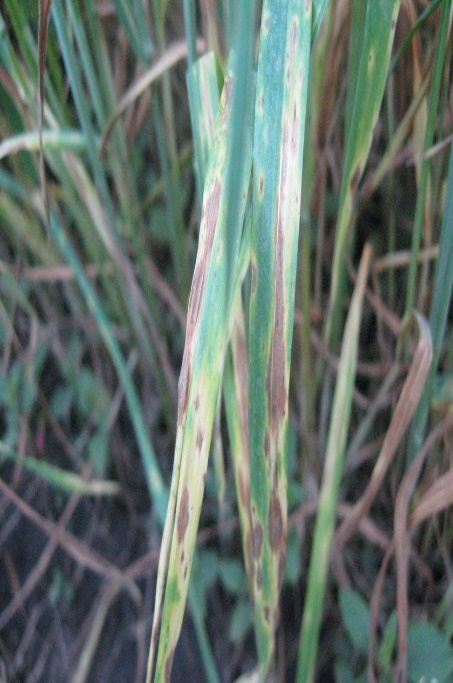
A subsidiary of the “National Agrarian Science and Educational Center” JSC – “Zh. Zhiyembayev Kazakh Research Institute for Plant Protection and Quarantine” LLP during an online consultation talked to farmers about the main diseases of grain and leguminous crops and measures to combat them. The speaker was Sultanova Nadira Zhumakhanovna, head of the department for the protection of grain, oilseeds and legumes, candidate of agricultural sciences of the Republic of Kazakhstan. During the online consultation, Nadira Sultanova described in detail for each type of disease of grain crops and demonstrated on picture their types, as well as methods of dealing with them.

Major diseases of cereal and control measures
In Kazakhstan, winter, spring wheat and barley are affected by rust, smut, septoria, powdery mildew, helminthosporious and yellow spotting, root rot, olive mold, black germ of grain, snow mold, and other smut diseases.
Smut diseases affect all cereals. The disease may not appear outwardly, and go unnoticed, called hidden losses, which lead to tangible decreases in quality and productivity. Hard smut of wheat is caused by the fungus Tilletia caries (DC.) Tul, dusty smut of wheat by the fungus Ustilago tritici (Pers.) Jens., Dwarf smut of wheat is caused by the fungus Tilletia controversa Kuehn. Control measures for smut diseases: presowing treatment of seeds with chemicals in compliance with the norms of consumption of drugs, cultivation of stable mortars.
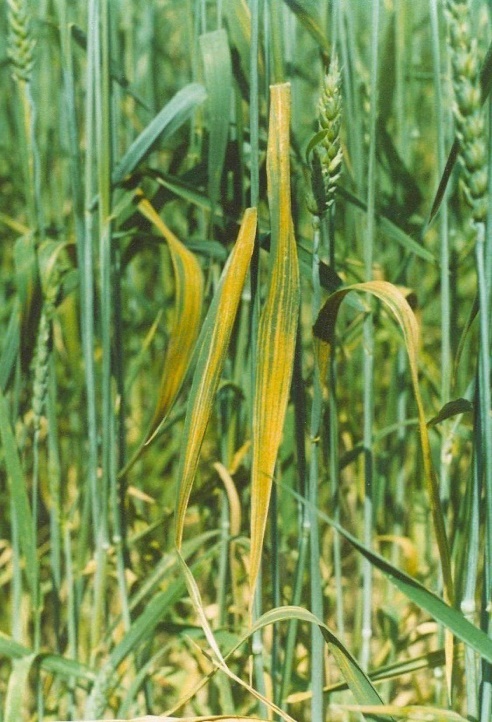
Diseases with soil infection
Root rot. Cereals from the seedling-tillering phase to full ripeness are affected by several types of root rot of pathogens differing in the species composition and external signs of the manifestation of the disease: helminthosporious, fusarious, ophioboleznoe, cercosporellosis and pitiosa. The spread of root rot largely depends on previous crops, as well as on the climatic conditions of the plant growing season. Control measures: a complex of agrotechnical, organizational and economic measures for improving the soil. Presowing seed treatment with chemicals in compliance with the norms of consumption of drugs.
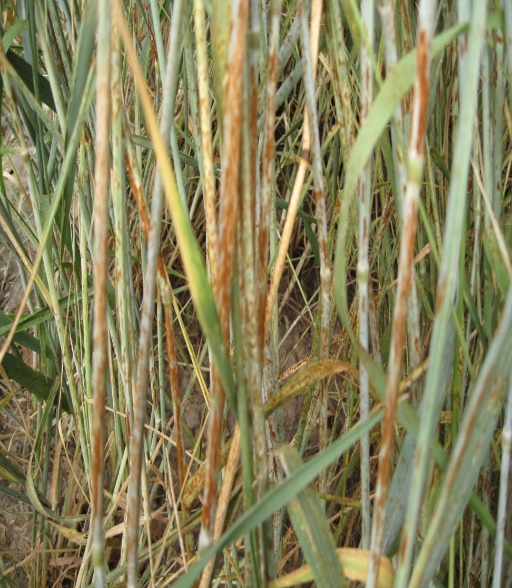
Rust diseases
Three types of rust are harmful in Kazakhstan: stem (Puccinia graminis Pers. Sp.f. tritici Erics et Henn., Brown (Puccinia recondita Rob. Et Desm. (Syn. Puccinia triticina Eriks. Et Henn), and yellow (Puccinia striiformis West (syn. P. glumarum Er.et Henn.). Rust causes great harm to crops, reduced the productivity, grain becomes lightweight, reduced the winter hardiness, drought tolerance of plants decreases. Mass damage to crops can cover large areas, taking on the nature of epiphytoties with a frequency of 1-2 up to 5-6 times in every decade. Losses from one type of rust make up 10-15% of grain yield on, and in conditions of epiphytoties can reach 30-50% or more. The measures against rust diseases are: cultivation of resistant varieties of crops, spraying of crops with fungicides.
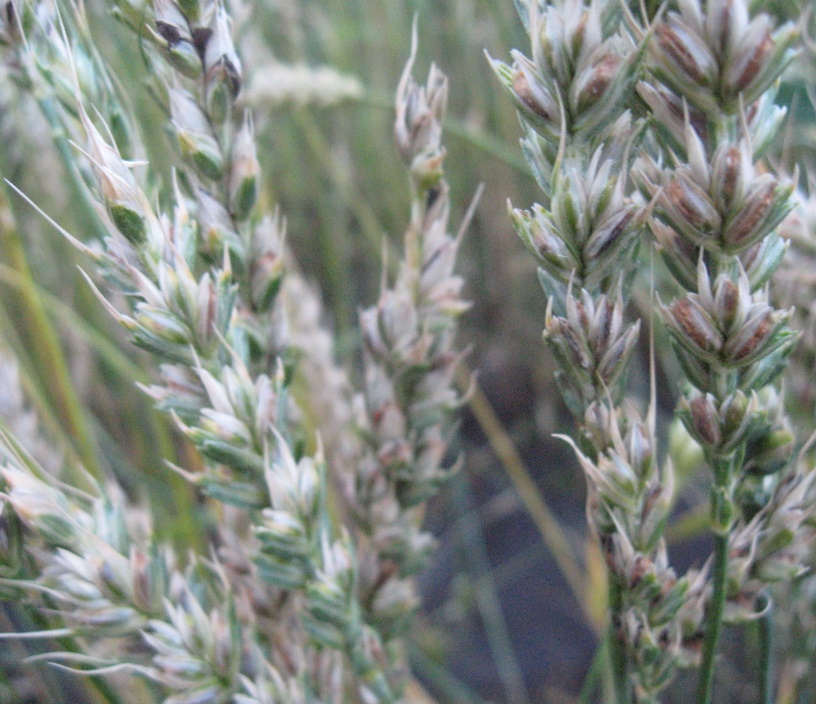
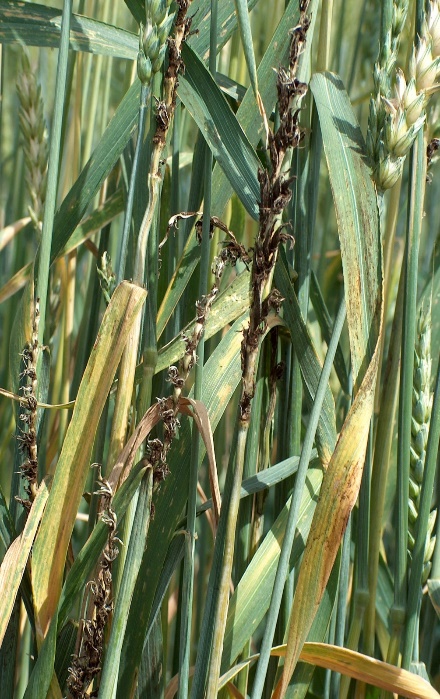 Leaf spotting
Leaf spotting
Septorious spotting. Wheat is most affected by Septoria, on which two types of the pathogen are mainly distributed: Septoria nodorum Berk. and S. tritici Rob. et Desm. Sources of septoria infection are plant debris located on the surface of the soil and stubble, where the fungus overwinters.
Yellow spotting. The causative agent of the disease is fungus - Drechslera tritici repentis Shoem. (Syn. Helminthosporium tritici repentis Nisik). Yellow leaf blotch is common in the southern and southeastern region on winter wheat, and in the north on spring wheat. It affects triticale and some types of grasses. The disease is promoted by frequent heavy rainfall and high air humidity (65-70% or more) during tillering - wheat heading.
Helminthosporious spotting. Winter, spring wheat and barley are affected by helminthosporious leaf spot, caused by the fungus Bipolaris sorokiniana Sacc. The disease is harmful on spring wheat and barley. Depending on weather conditions, the disease appears on the stems and leaves of wheat and barley in the form of small, oval, dark gray, light brown spots with a dark border. The source of infection is plant debris and seeds.
Control measures: cultivation of sustainable varieties of crops; spraying of crops with fungicides; Plowing of crop residues and seedlings.
 The speaker - Sultanova Nadira Zhumakhanovna.
The speaker - Sultanova Nadira Zhumakhanovna.


